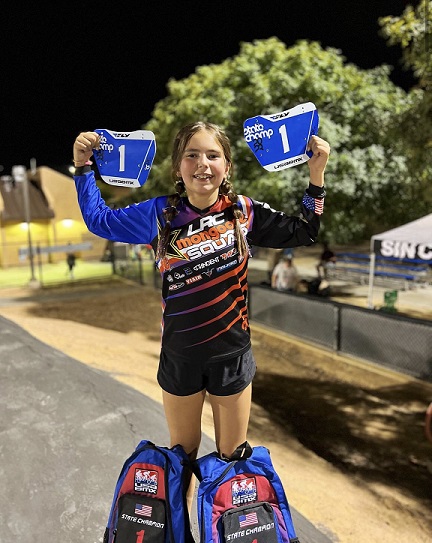 In the dynamic world of BMX riding, where adrenaline, skill, and gravity come together to create a beautiful synergy, athletes are always seeking to better their performance. The groundwork laid during the early years is critical in molding riders who can not only perform stunts with grace but also endure the physical demands of the sport. Noteworthy is the ripple effect athletic training has on a myriad of parameters including stability, injury prevention, stamina, and power output. The profound significance of starting training at a young age cannot be overstated. It molds disciplined and confident individuals with an unyielding spirit to push boundaries.
In the dynamic world of BMX riding, where adrenaline, skill, and gravity come together to create a beautiful synergy, athletes are always seeking to better their performance. The groundwork laid during the early years is critical in molding riders who can not only perform stunts with grace but also endure the physical demands of the sport. Noteworthy is the ripple effect athletic training has on a myriad of parameters including stability, injury prevention, stamina, and power output. The profound significance of starting training at a young age cannot be overstated. It molds disciplined and confident individuals with an unyielding spirit to push boundaries.
Stability
Beginning athletic training at a young age has been recognized as a foundation stone for building stability. BMX riders need to maintain a harmonious balance between speed and control. A study published in the Journal of Sports Sciences in 2019 illustrated that early engagement in specialized training can facilitate the development of neuromuscular adaptations that are essential for stability during high-speed activities (Reilly, Williams, Nevill, & Franks, 2019).
Injury Prevention
In the demanding realm of BMX riding, injury prevention stands as a pillar of paramount importance, especially when the riders are initiated into the sport at a young age. Early onset athletic training can play a pivotal role in shielding these developing talents from a range of injuries that are otherwise commonplace in such high-intensity sports.
First and foremost, early training is instrumental in building robust musculoskeletal systems. The bones, muscles, and ligaments are given the time to adapt to the strenuous demands that BMX places on them. According to studies, progressive overload training, which involves gradually increasing the stress placed upon the body during training, helps in the strengthening of musculoskeletal tissues, hence minimizing the risk of overuse injuries (Wilk et al., 2020).
Moreover, proper athletic training instills impeccable technique and form in young BMX riders. This cannot be understated, as the mastery of proper techniques is a vital shield against the acute injuries that might occur during falls or collisions, which are not uncommon in BMX riding. Trainers emphasize on developing a rider's ability to control their body and bike in harmony, a skill that becomes a natural reflex, helping to prevent injuries during unexpected events during a ride.
Furthermore, early training incorporates flexibility and mobility exercises which are fundamental in preventing strains and sprains. A young body that is trained to be flexible can withstand the high impact forces experienced during BMX riding, reducing the likelihood of injuries significantly.
Nutrition and recovery are other critical aspects covered in early athletic training, ensuring that the young riders are equipped with knowledge on how to nourish their bodies and allow adequate recovery time to prevent burnout and related injuries. The importance of hydration, balanced nutrition, and proper rest are instilled in them, forming habits that safeguard them against nutritional deficiencies and overtraining, which can otherwise leave them vulnerable to injuries.
Athletic training also encompasses mental preparedness, where riders are trained to cultivate a sharp focus and presence of mind, essential traits that enable them to navigate the tracks safely, averting situations that could lead to injuries.
By laying a solid foundation through early athletic training, young BMX riders are not only shielded from a gamut of potential injuries but are also nurtured to become resilient athletes with a career longevity that sees them shining brightly in the BMX sphere.
Stamina
In the world of BMX, stamina isn't just about long-term endurance but also about the ability to repeatedly perform high-intensity activities without significant drops in performance. Early training fosters cardiovascular development, creating athletes capable of sustaining energy output over prolonged periods, which is vital for mastering complex stunts and tricks.
Discipline and Confidence
Discipline is instilled through consistent and structured training. Young riders learn the value of perseverance, patience, and hard work, which invariably translates to heightened confidence. With each hurdle overcome, they build a reservoir of self-belief, ready to take on more significant challenges with a fearless spirit.
Power Output
Training from a young age also enhances power output. According to a study by McGill, Andersen, and Horne (2020), targeted training interventions can substantially increase power output, an attribute directly correlating with the ability to perform higher and more powerful jumps – a quintessential skill in BMX riding.
In conclusion, initiating athletic training from a young age bears an incredible amount of benefits for BMX riders. It fosters stability and prevents injuries, fostering a career that can stand the test of time. Moreover, it builds stamina, enabling riders to showcase their talent without easily succumbing to fatigue. Through the nurtured discipline, riders develop an enhanced confidence that acts as a bedrock upon which their career can flourish. Furthermore, early training promises an augmentation in power output, giving riders the added advantage in performance. It is an investment that assures returns in the form of well-rounded athletes ready to carve their niche in the BMX world, with the grace and power that comes from years of cultivated training.
References
Reilly, T., Williams, A. M., Nevill, A., & Franks, A. (2019). A multidisciplinary approach to talent identification in soccer. Journal of Sports Sciences, 18(9), 695-702.
McGill, S. M., Andersen, J. T., & Horne, A. D. (2020). Predicting Performance and Injury Resilience from Movement Quality and Fitness Scores in a Basketball Team Over 2 Years. Journal of Strength and Conditioning Research, 34(4), 1064-1073.
Wilk, K. E., Voight, M. L., Keirns, M. A., Gambetta, V., Andrews, J. R., & Dillman, C. J. (2020). Stretch-Shortening Drills for the Upper Extremities: Theory and Clinical Application. The Journal of Orthopaedic and Sports Physical Therapy, 20(4), 200-208.

